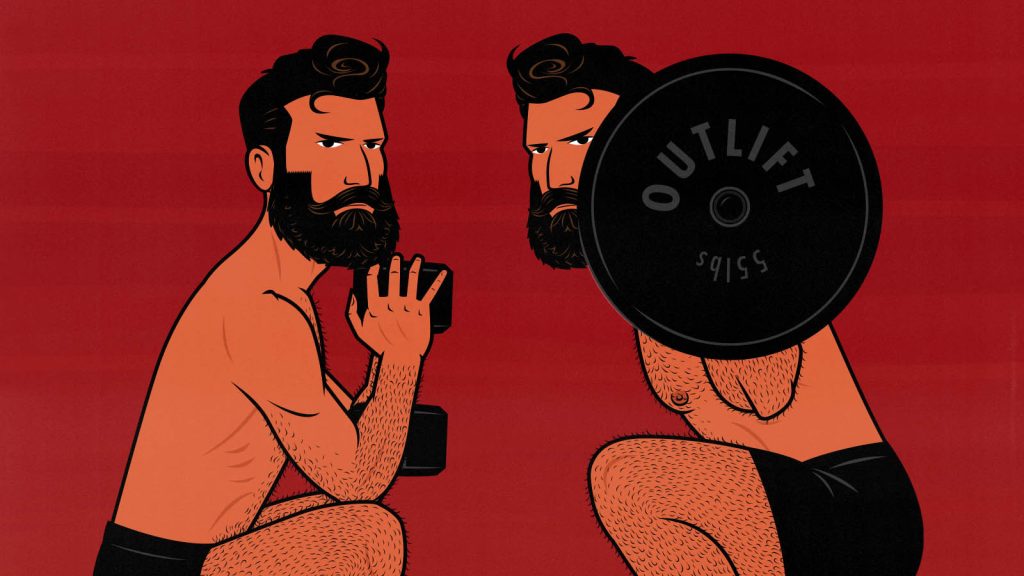
How Many Exercises Should You Do Per Muscle Group?
Doing 2–3 different exercises per muscle group gives you more balanced muscle growth and a lower risk of injury (systematic review). It’s one of the more important parts of building a good workout routine. The catch is that the exercise combinations need to complement one another, which means you either need to learn some biomechanics… or read this article.
More Exercises → More Muscle Growth
Different exercises work your muscles in different ways, stimulating muscle growth in different areas. That’s obviously true for exercises that work different muscles, like squats (quads and glutes) and deadlifts (hips, hamstrings, glutes, and back), but it’s also true with exercises that work the same muscles, like squats and leg extensions.
For example, Fonseca compared muscle growth from squats against a mix of squats, deadlifts, leg presses, and lunges (study). Both groups did the same total number of sets for their legs, but the people doing a wider variety of exercises did a better job of bulking up their quads:
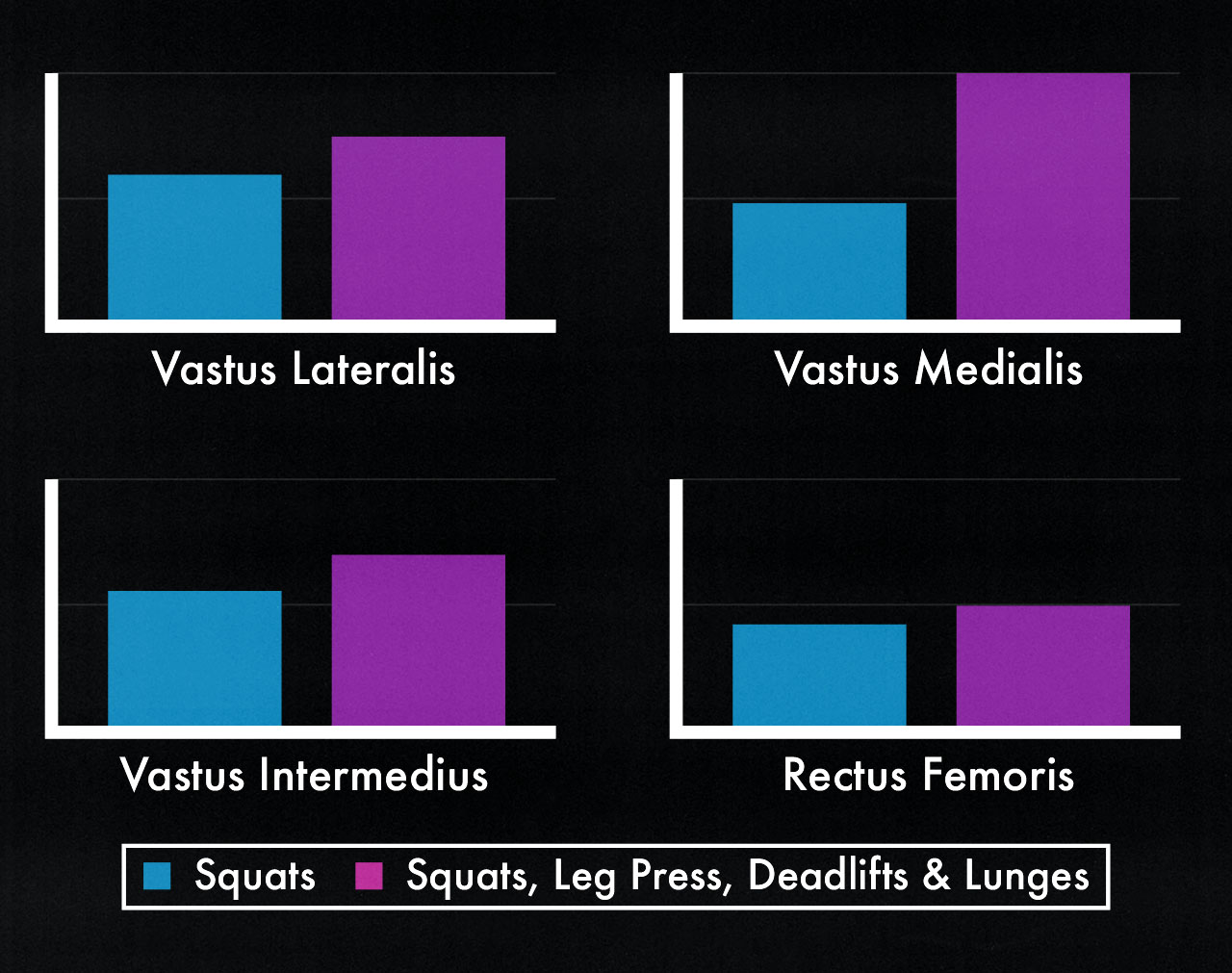
The study is a little strange, though. Squats, deadlifts, leg presses, and lunges are a good mix of exercises for your lower body, but the researchers just measured the quads. If you want balanced growth in your quads, you’d want to combine a squat variation and a leg extension variation.
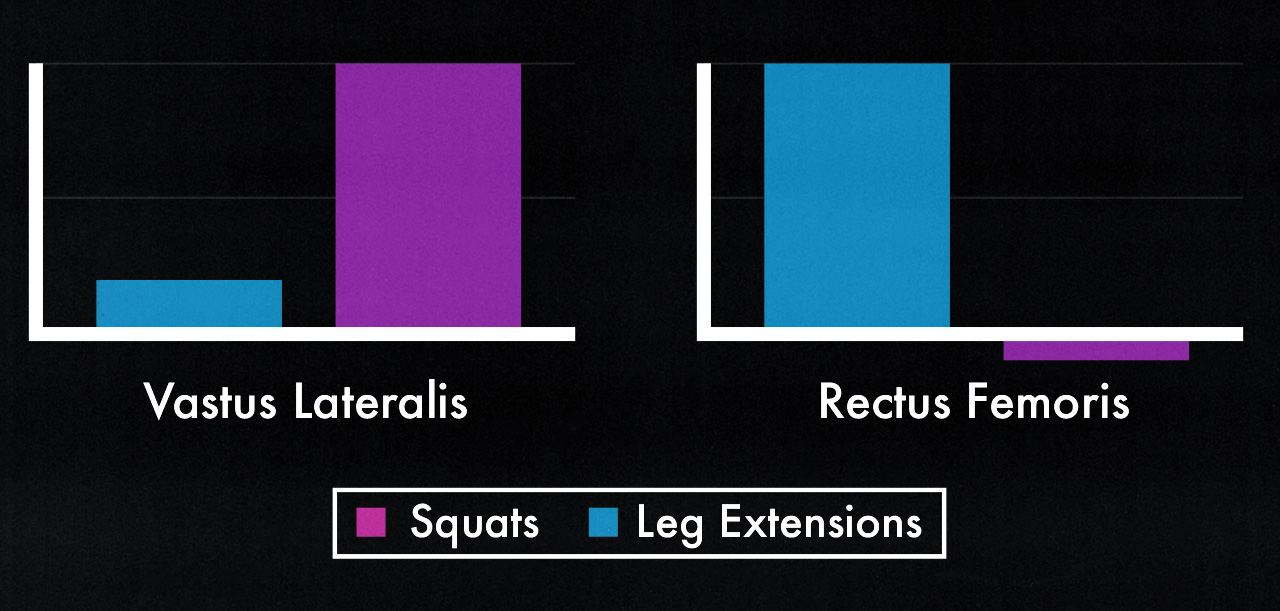
For example, in this study, the squat was great for bulking up one head of the quads, whereas the leg extension was better at bulking up another. That’s because the rectus femoris can’t engage very well where there’s movement at the hip joint. It needs an isolation exercise. So, if you want balanced quad growth, it pays to do both exercises.
It’s the same with most muscle groups. Double a couple of compound exercises for each muscle is often a good idea, and then add isolation exercises for the muscles that need them.
Varying Exercises Between Workouts
One way to train a muscle is by hammering it with a bunch of different exercises in one workout. For example, if you’re following a Bro Split with a dedicated Chest Day, you could have 2 or 3 exercises for your chest and an isolation exercise for your triceps.
Or you could train every muscle 2–4 times per week, using different exercises each time. That’s usually ever so slightly better, as it keeps your muscles growing steadily all week long (full explanation). In that case, if you’re doing a 3-day full-body workout routine, you could do a flat bench press on Monday, an incline bench press on Wednesday, and dips on Friday.
That’s what they did in this study. One group did the same full-body workout 3x per week. The other group did three different full-body workouts, each with slightly different exercise variations. Both groups gained a similar amount of muscle overall, but the group doing 3 exercises per muscle got more balanced muscle growth.
As with the Fonseca study, I think the researchers could have done a better job of combining exercises. They had the participants doing half squats, leg presses, and hack squats, which work the quads in the same way. Instead, they could have given the participants back squats, split squats, and leg extensions, which stimulate the quads in different ways.
Still, even if you don’t really know what you’re doing, using a variety of exercises tends to help. Usually. There’s one key exception.
Performance Versus Aesthetics
If you want to get better at a specific exercise, and if that exercise takes skill to master, then it pays to practice it as much as possible, at least until you master it. For example, if you’re a powerlifter trying to improve your squat strength, you should spend most of your time squatting, not doing split squats, leg presses, and leg extensions (study). You’ll gain more strength that way.
If you’re a bodybuilder trying to build a balanced and aesthetic physique, you should use a variety of exercises that stimulate a variety of muscle fibres. For example, if you’re trying to build aesthetic quads, then you should do a mix of squats, split squats, and leg extensions to develop all of the heads (study). You’ll build more muscle that way.
If you aren’t training for anything in particular, but you like the idea of improving your strength, muscle, appearance, health, and performance, then you should train with a wider variety of exercises. You won’t be as good at any one exercise, but you’ll be better at a wider variety of exercises, you’ll have a more balanced physique, and you’ll be less likely to develop overuse injuries (e.g. sore elbows, a bad shoulder, or achy hips).
How to Combine Different Exercises
Muscles that cross one joint (like your chest, lats, and glutes) grow incredibly well from the big compound exercises. You can bulk them up just fine with bench presses, pull-ups, and squats. But different variations can hit different fibres. For example, doing pull-ups with a wide overhand grip is probably better for your lower lats, and the incline bench press is almost certainly better for your upper chest (study).
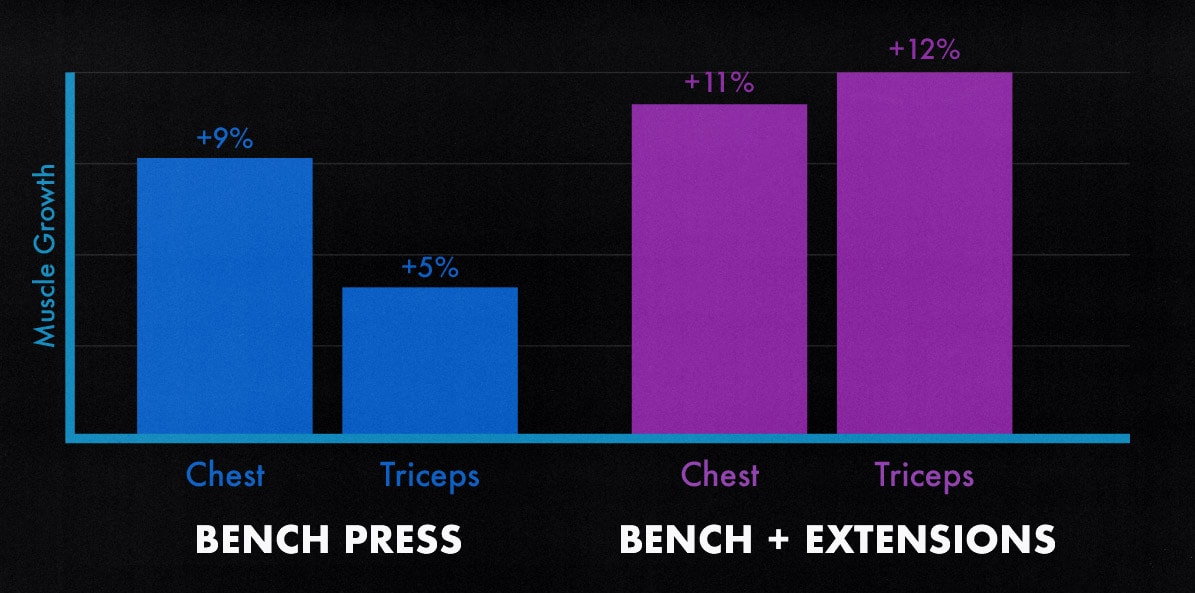
Muscles that cross two joints (like your biceps, triceps, and hamstrings) often grow better with isolation exercises. For example, when you’re doing the bench press, the movement at the shoulder joint interferes with your triceps (study). These muscles usually benefit from isolation exercises like biceps curls, triceps extensions, Romanian deadlifts, and leg curls.
So, if we’re trying to grow your pressing muscles, we might have a press for your mid and lower chest (e.g. dips), a press for your upper chest (e.g. incline bench*), and an isolation exercise for your triceps (e.g. overhead extensions). That means it takes at least 3 exercises to properly train your chest.
This gets complicated when you have a bunch of different muscles with overlapping functions, like the mess of muscles in your back (fully explained here). You might want a horizontal and a vertical pull, and you might want to vary your elbow flare. So maybe that’s t-bar rows (horizontal, elbows flared) and chin-ups (vertical, elbows tucked). And then you want an exercise that challenges your spinal erectors, and one that works your upper traps, so maybe a deadlift. That means it takes at least 3 exercises to properly train your back muscles.
Changing Exercises Over Time
You don’t need to squeeze every exercise into the same workout routine. You can do one exercise for a few weeks (like a dumbbell bench press), get stronger at it, and then rotate in a similar exercise (like a barbell bench press). Those two exercises are too similar to include in the same workout—they work the same muscle fibres in the same way—but that makes them perfect alternatives to one another.
Push-ups, dips, chest press machines, dumbbell bench presses, and barbell bench presses are all great for your mid and lower chest, but they all stress your shoulder joint in slightly different ways, and they might target slightly different fibres (or portions of fibres) in your chest and shoulders. Push-ups and dips also have the advantage of training your serratus anterior.
I recommend switching some of your exercises every 4–12 weeks. That should reduce your risk of injury, help you build a more robust body, and give you slightly more balanced muscle growth. I suspect you’ll also build more muscle overall, though that’s harder to prove.
Conclusion
You should do about 3 exercises per muscle. A good rule of thumb is to choose a bilateral compound exercise (like a back squat), a unilateral compound exercise (like a split squat), and an isolation exercise for any troublesome muscle heads (like a leg extension for your rectus femoris).
Similarly, you could do an incline bench press, one-arm overhead press, and triceps extension. Or a chin-up, one-arm row, and biceps curl.
You can also vary the angle of the exercise. For example, you might want to do a barbell bench press, dumbbell incline bench press, and triceps extension.
If this sounds too complicated, we’ve got a novice muscle-building program and an intermediate hypertrophy program. We’ve chosen the best types of exercises for each muscle, and then you can pick the variation you prefer from dropdown menus (or stick with the defaults). That makes it easy.



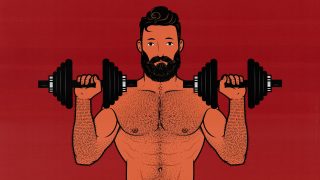
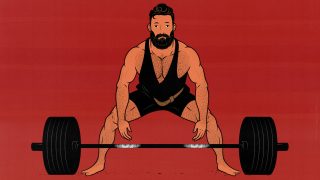
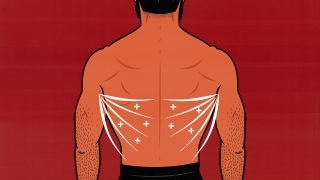
You messed up the squats vs leg extension graphic chart
Yes, you’re right. I had the colours backwards. Thank you! I fixed it.